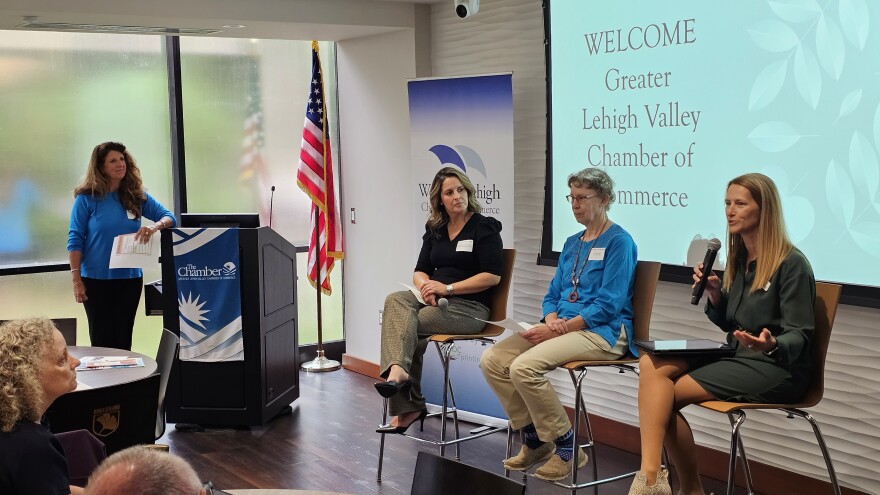ALLENTOWN, Pa. — Cooling off the Lehigh Valley’s hot housing market would be among the most effective ways to help the rising number of residents who struggle with food insecurity, several regional experts said Tuesday.
Leaders of two food pantries and an executive with the Second Harvest Food Bank were featured panelists at a luncheon at Cedar Crest College.
The event, held by East Penn and Western Lehigh Chambers of Commerce, focused on hunger in areas served by those organizations, but each was quick to say food insecurity is an issue throughout the nation.
Parkland CARES Food Pantry is taking “more and more calls” from people asking for help with food and a place to live because they can no longer afford their housing. "I do think that our numbers are going up because of that.”Parkland CARES Food Pantry Executive Director Katrina Sundstrom
Parkland CARES Food Pantry is taking “more and more calls” from people asking for help with food and a place to live because they can no longer afford their housing, Executive Director Katrina Sundstrom said.
“I do think that our numbers are going up because of that,” Sundstrom said.
Joy Paulsen, who leads public relations for Groceries PLUS at Bethel Church in Emmaus, said her organization now is serving about 140 families each month.
That’s up from about 85 families in 2021, a year into the COVID-19 pandemic, she said.
'Horror stories'
Second Harvest Food Bank distributes food to more than 200 organizations in six counties, including Lehigh and Northampton.
The organization sends out 1.6 million pounds of food each month, which provides 1.4 million meals, according to Community Services Manager Nicole Folino.
Second Harvest distributed 16 million pounds during its last full fiscal year, up from 11.3 million pounds the year before.
In June, Second Harvest Associate Executive Director Allison Czapp said the organization is serving about 110,000 individuals per month. That’s up from about 45,000 people per month during the COVID-19 pandemic.
Folino on Tuesday attributed much of that jump to “increased prices at the grocery store [and] increased housing” costs in the Lehigh Valley.
Rising housing costs not only have pushed more people to seek help at food pantries; it's also pushed many people to move out of the Lehigh Valley to Carbon County, Folino said.
One event guest said she’s heard “horror stories” in recent weeks about rising rent fees forcing people to rely on food pantries.
End of SNAP
A slew of new and increased subsidies helped millions of Americans find food after the need for pantries spiked sharply at the start of the COVID-19 pandemic, panelists said Tuesday.
“SNAP is the first line of defense in fighting food insecurity because it allows a family to receive those benefits and go and shop at a grocery store” instead of using a food pantry."Nicole Folino, community services manager at Second Harvest Food Bank
But many were forced back to pantries with the end of increased benefits under the Supplemental Nutrition Assistance Program — formerly known as food stamps — last spring, Folino said.
The average SNAP household in Pennsylvania saw its monthly benefits cut about $180.
“SNAP is the first line of defense in fighting food insecurity because it allows a family to receive those benefits and go and shop at a grocery store” instead of using a food pantry, Folino said.
She urged Lehigh Valley business leaders in the room to advocate for lawmakers to pass a Farm Bill with significant support for food banks.


